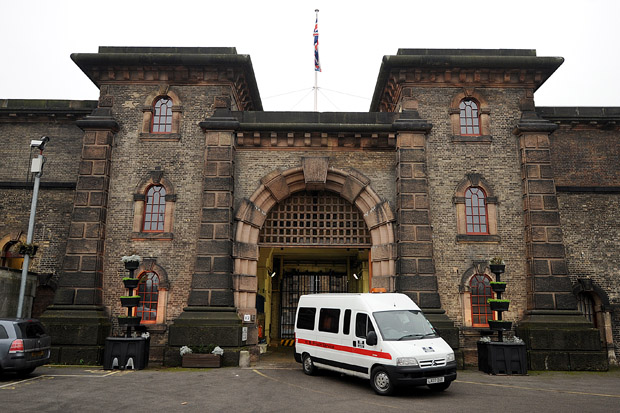One of the stated objectives of this week’s brief strike by prison officers was to publicise the dire conditions in many of our jails. In this regard, as in many others, it was a failure. The strike triggered discussions as to whether it was legal (it wasn’t, the High Court ruled) and questions about how exactly it helped prison safety to abandon the wings to the inmates for the day.
But there is all too little awareness of or concern about the increasingly desperate living conditions of those sentenced to spend time at Her Majesty’s pleasure. Order seems to be breaking down. In the past year there have been 625 serious assaults by prisoners on prison staff — up 30 per cent on the previous year — plus six homicides and 2,197 serious assaults against fellow inmates.
When schools, hospitals and trains deteriorate, we notice because we can see what is happening. All we tend to hear about prisons are dry statistics. Dry, but still shocking. Since 1993 the prison population has almost doubled to 85,000. Given how much crime is committed by a handful of prolific criminals, there is a strong argument for using prison to protect us from the worst offenders. But that should not blind us to the conditions behind prison walls. While the number of inmates has risen, the number of prison officers has plummeted — down by a quarter in the past six years. Violent incidents have more than doubled over the same period.
You don’t have to be a liberal extremist opposed to incarceration to see how wrong this is. If safety is so badly compromised, if about half of adult prisoners are re–convicted within a year of release, then prisons are not working. And it is the poorest members of society who have to put up with recidivist thugs and drug-dealers prowling their neighbourhoods. Those with high fences, burglar alarms and CCTV need not worry as much.
This is a crisis which demands a debate. First, just how many criminals should we be incarcerating — and what results should we demand of prisons? If we do decide as a society that we want so many people in jail, then the costs must be met head-on. Over the past two decades governments of all colours have been increasing sentences to satisfy public demands, yet they have failed to provide for the consequences. That cannot carry on.
Much more, for instance, should be done to educate prisoners and prepare them for employment when they have served their time — including the temporary release to part-time jobs of those in open conditions. That means more investment and, yes, some risk; but the results will be quickly measurable.
Then there are challenges from technology. In April, security cameras caught a drone delivering drugs and mobile phones through an open window at Wandsworth Prison. Inmates now smuggle thumb-sized mobile phones into jail up their backsides. These are freely for sale online under the name ‘Beat the Boss’: Boss being the ‘body orifice security scanner’ designed to detect concealed metal objects.
Synthetic drugs such as ‘Black Mamba’ and ‘Spice’ are also on the rise; they are far harder to test for than marijuana and cocaine, and their use has undoubtedly contributed to increased levels of violence.
If current trends continue — a justice system quick to incarcerate; new threats and challenges; a government that won’t fund prisons properly — then it is easy to see what lies ahead. Another mass riot like that at Strangeways in 1990, or perhaps a terrorist event — hardly unthinkable, given how many Islamic fundamentalists are now locked up.
At the start of the year, David Cameron gave a speech about prisons — the first by a prime minister for more than 20 years. He was following the lead of Michael Gove, the former justice secretary, who was asking good questions that discomfit Conservatives: does prison work? Are prisons places of redemption and hope? Does the taxpayer really get value from a system where it costs as much as the school fees at Eton to lock someone up? At the moment we warehouse criminals, often in rundown Victorian buildings, rather than reform them. As the former chief inspector of prisons Nick Hardwick has said: ‘It is hard to imagine anything less likely to rehabilitate prisoners than days spent lying on their bunks in squalid cells watching daytime TV.’
In the government’s recent white paper on prisons, there is at least the recognition that things have got out of hand — and the promise of ‘the biggest overhaul’ of the system in a generation. Liz Truss, the Justice Secretary, has made funding available for prison officers to use body-worn cameras. But prison safety cannot be dealt with incrementally over the next four or five years. It is too urgent for that.
Theresa May, who was one of the longest serving home secretaries, knows this area well. She is aware that prison reform is no vote-winner; but she also knows the risks of allowing these problems to fester. While much of her time will be taken up with Brexit, she should prioritise prisons before they deliver the first real crisis of her premiership.






Comments